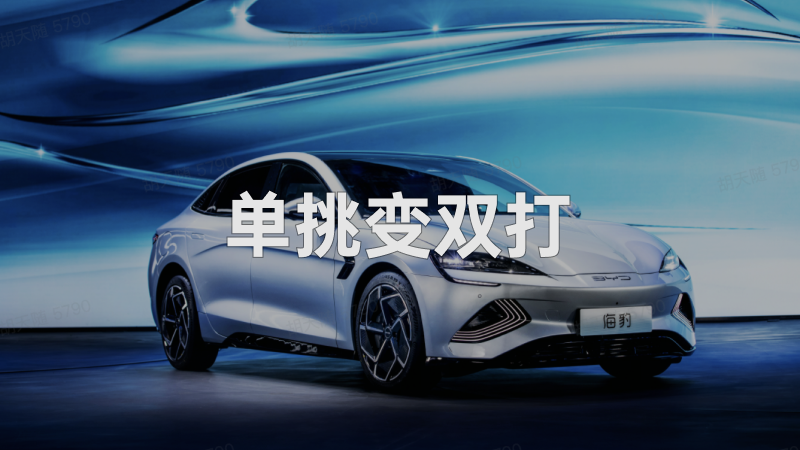I usually refrain from making summary evaluations about a car at the beginning of an article. However, today’s protagonist is quite special, and its name is Haibao.
This car is the first rear-wheel-drive passenger car in BYD’s history, the first pure electric vehicle equipped with front double wishbone and rear five-link suspension, as well as the first vehicle of BYD’s to use a combination of front asynchronous and rear permanent magnet motors. With these configurations, coupled with the dimensions, coupe shape, and officially announced 3.8-second 0-100 acceleration, Haibao gives the first impression of a pure electric sports sedan.
Prior to today’s press conference, I believe many of you have seen many comparisons between this car and the Model 3. My conclusion about BYD Haibao is that it is not BYD’s Model 3, nor will it become a replacement for the Model 3. But it fills the gap in BYD’s product line and will continue to expand the “Matthew Effect” of BYD in the pure electric sedan market.
New Car, New Market
The Haibao press conference today featured a lot of information, including the product content and the CTB battery technology content that everyone is concerned about. In this article, we will cover all of them. In the first half, we will summarize the key content of the price and configuration related to the conference.
Price & Models
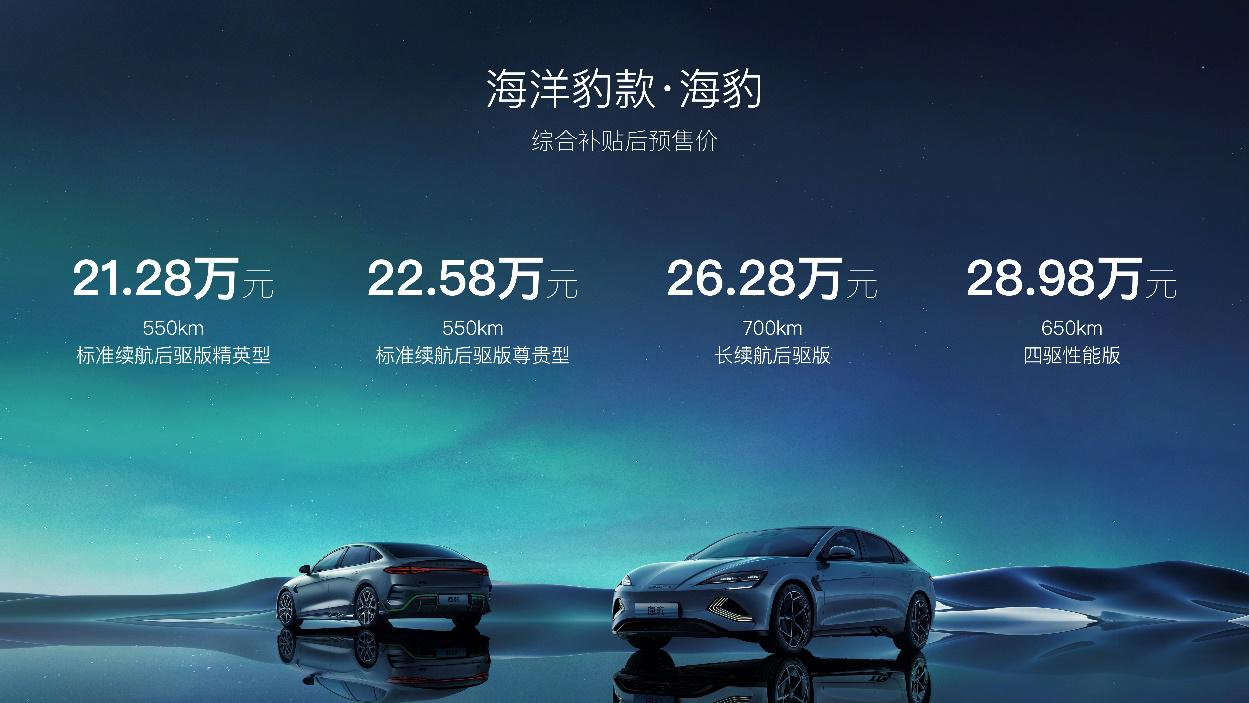
First of all, Haibao’s pre-sale prices are:
-
Standard Endurance RWD Elite version at 212,800 RMB, with a CLTC range of 550 km;
-
Standard Endurance RWD Premium version at 225,800 RMB, with a CLTC range of 550 km;
-
Long Endurance RWD version at 262,800 RMB, with a CLTC range of 700 km;
-
4WD Performance version at 289,800 RMB, with a CLTC range of 650 km.
It is not difficult to see that Haibao’s pricing is very similar to the initial Han EV release, with the various configurations staggered, covering a range of about 200,000 to 300,000 RMB. In today’s high raw material prices and electric cars generally rising in price, Haibao has a good cost-performance ratio compared to XPeng P7 and Tesla Model 3, which is different from the Han EV release. However, the difference from Han EV is that Haibao’s positioning is more coincident with the first two, and more in line with the benchmark.
Differences in Version Configuration
All versions of BYD Haibao are equipped with lithium iron phosphate batteries, and the main differences between different versions are the battery capacity and motor configuration. The battery capacity of the entry-level model is 62.44 kWh, the maximum motor power is 150 kW, and the 0-100 acceleration is 7.8 seconds.
The long-endurance rear-wheel-drive model one level up has a battery capacity of 82.56 kWh, which not only enhances the endurance but also sees the maximum motor power rise to 230 kW, bringing the vehicle’s 0-100 acceleration into the 5-seconds range.The top-tier four-wheel drive high-performance model comes with an additional 160 kW induction motor on the front axle, further enhancing its power and accelerating from 0 to 100 km/h in just 3.8 seconds, making it the second fastest among BYD’s current production cars.
There are three key points worth mentioning in the car’s configuration. Firstly, the single-motor model of Hai Bao is rear-wheel drive, which is a significant improvement compared to the previous front-wheel-drive model, and theoretically, it will have better driving fun than previous BYD models.
Secondly, Hai Bao’s motor configuration includes the most powerful 230 kW permanent magnet motor, which is even more powerful than the 220 kW rear motor on the Tesla Model 3 Performance, second only to SAIC and Huawei’s 250 kW.
Thirdly, for the first time, BYD Hai Bao adopts a front-small-back-large motor configuration on its four-wheel drive model, with a front asynchronous motor and a rear permanent magnet motor arrangement. This arrangement not only distributes power more towards the rear drive but also reduces energy consumption under low load conditions as the front motor does not engage. This front-small-back-large arrangement is also used in Tesla Model 3’s four-wheel-drive model and Nio ET5.
Distinct Advantages and Disadvantages in Interior and Exterior Design
It may sound odd, but the Sea Lion (Hai Bao) spent a lot of time discussing the car’s sporting prowess during its launch event.
As they say, first impressions count, and it’s the same for cars. The impression formed is usually superficial but realistic, based on how the exterior looks, which can act as an evaluation of a car’s sportsmanship.
The Exterior Design is Decent, But a Little Familiar
BYD Hai Bao measures 4,800 × 1,875 × 1,460 mm with a wheelbase of 2,920 mm. The body’s width accounts for more than 60% of the vehicle’s size, making it pure electric in terms of proportions. Furthermore, BYD did a good job in controlling the height of the Sea Lion, which is only 17 mm higher than the Model 3. With the short front and rear suspensions, the car’s low center of gravity gives it a sporty stance. In addition to being attractive, the car’s sleek shape, coupled with an active air intake grille, produces a wind resistance coefficient of 0.219.
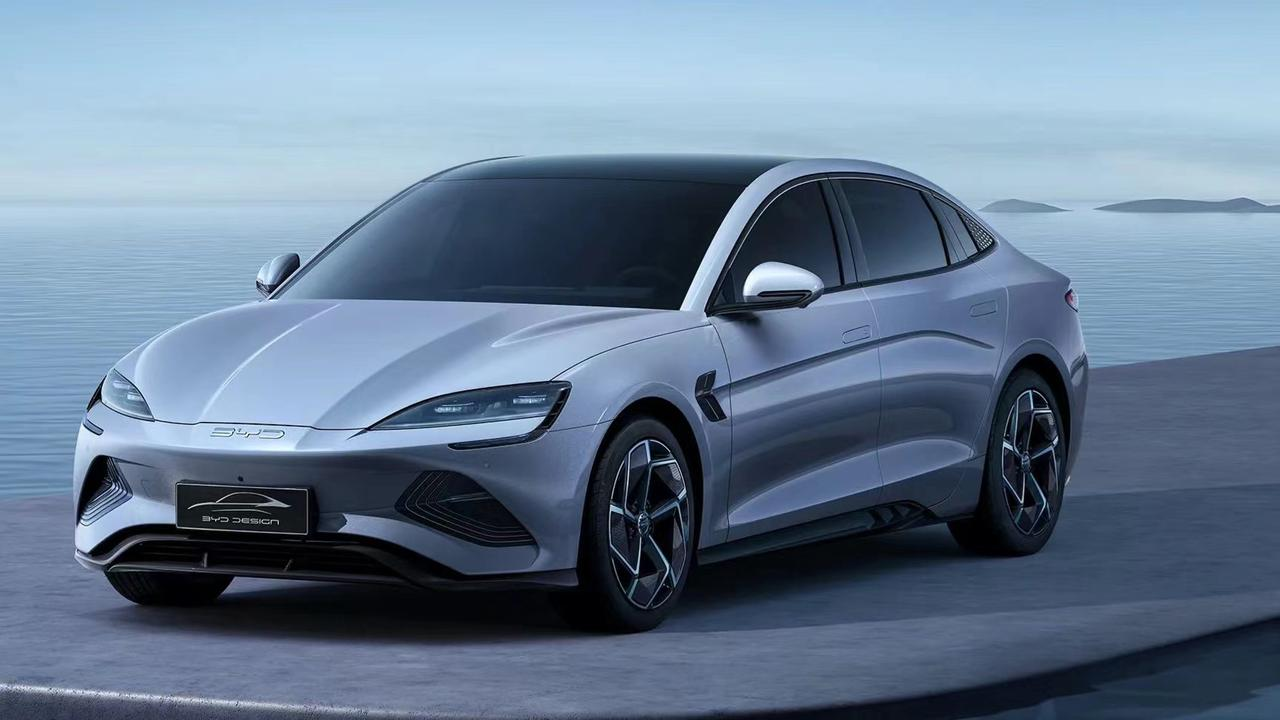
BYD Hai Bao’s front-end design has departed from the family’s signature “Dragon Face,” and you can hardly find any design elements that can be associated with BYD except for the new BYD lettering. The two raised lines of the headlights’ contour and the front hood make the car’s front-end resemble the small Taycan.
As a result, the visuals are more concise and sporty, making it among the most attractive BYD sedans. However, these non-familial design elements lack originality and can be seen as feeling imitated, similar to the DENZA D9’s design.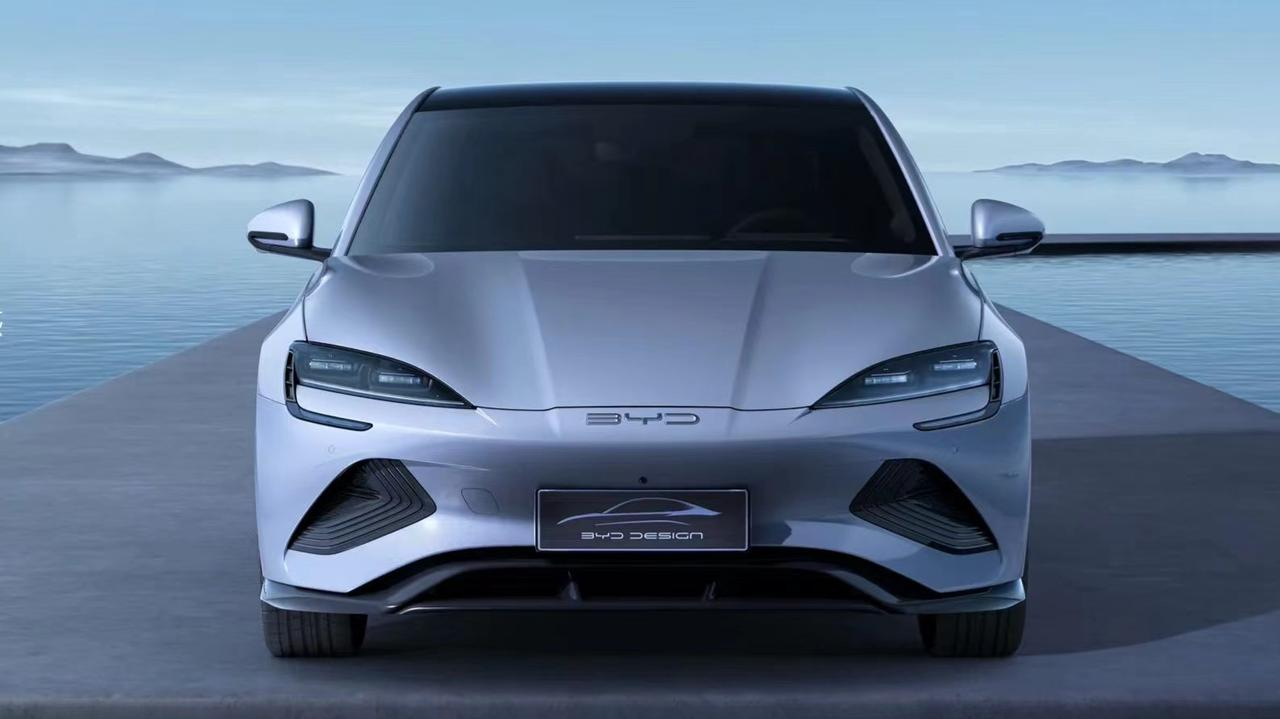
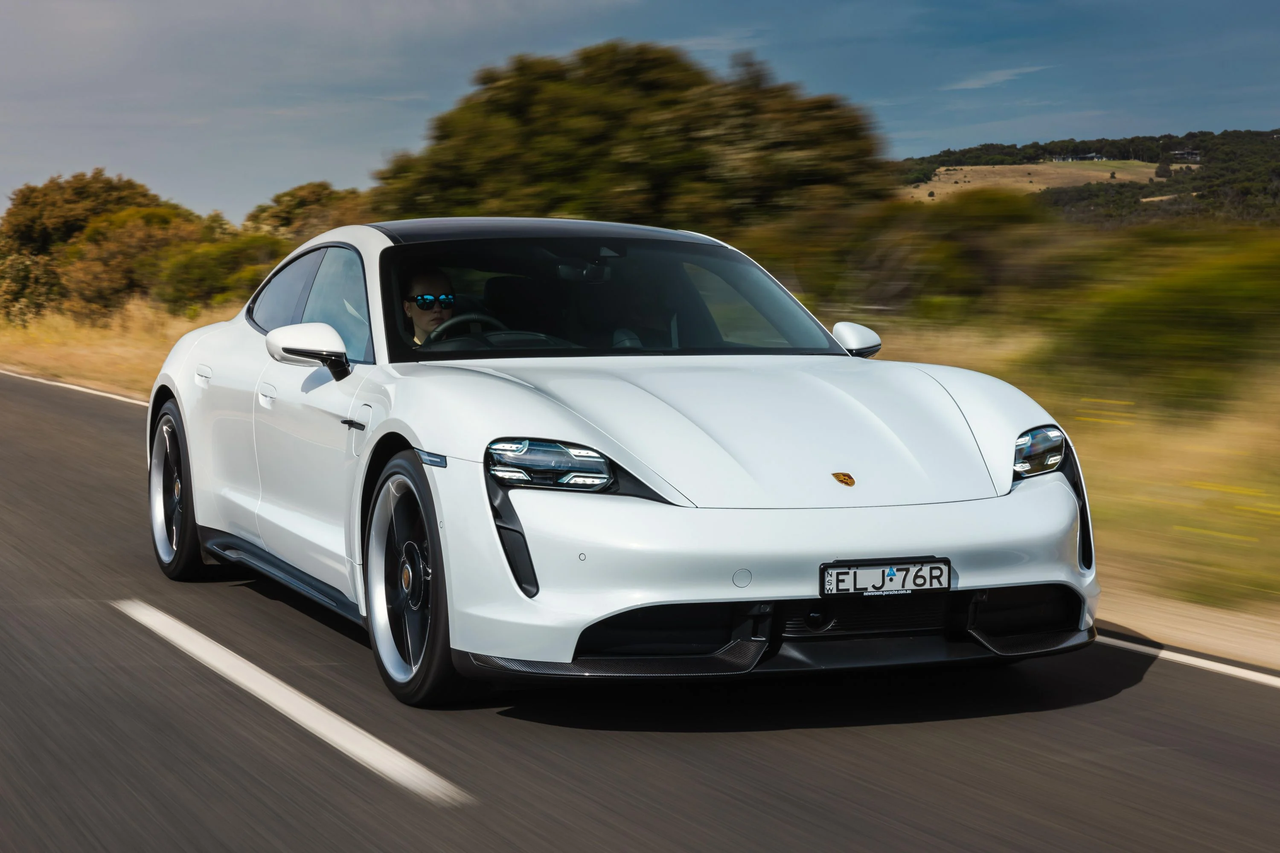
Compared with the Model 3, the side of the Sea Lion is similar, but there is no “tribute” design on the distinctive lines. The compact and coordinated proportions are in line with everyone’s impression of a sports sedan. The same is true for the new 19-inch wheels, which not only match the overall style of the car, but also consider the cost of changing tires and low wind resistance design.
Two design flaws that should be pointed out on the side are the black trim at the fender and the piece-shaped side skirt under the rear door, which not only lack the aesthetics of irregular shape, but also do not match the overall design theme. These two are typical overdesigns of BYD, which would be better without.
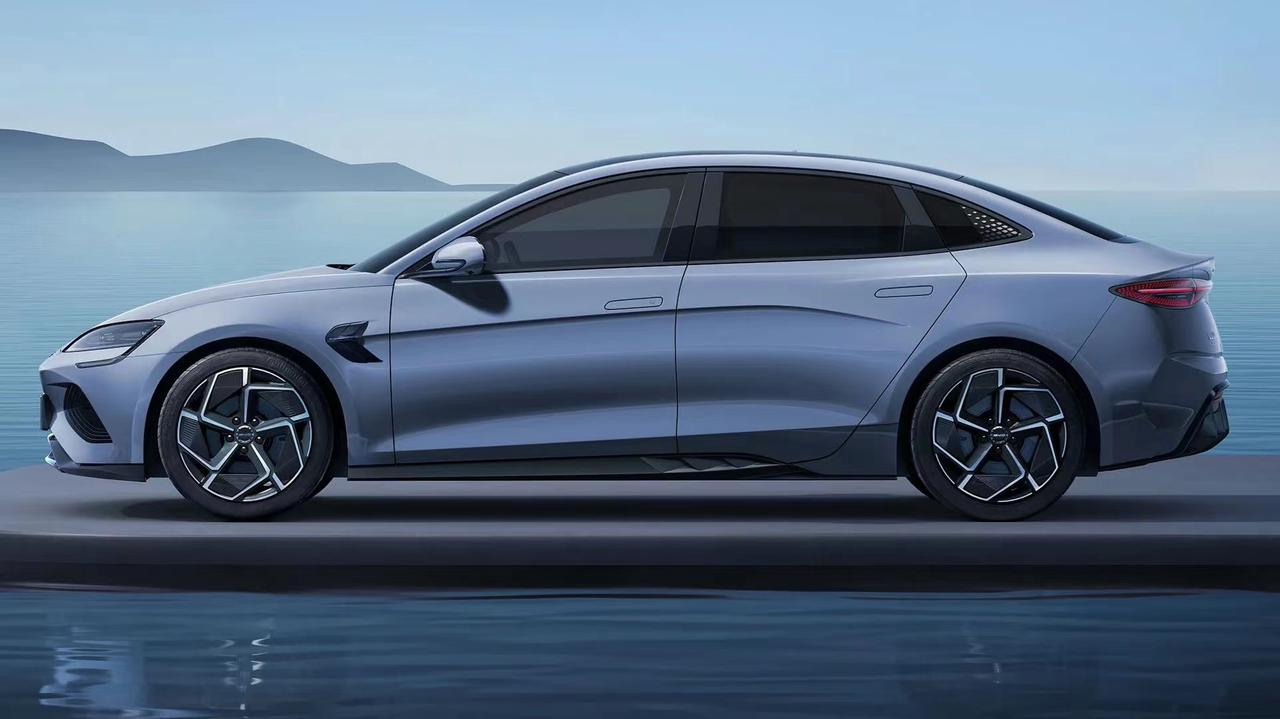
As for the rear of the Sea Lion, the most eye-catching part is the brand new through-type taillights. The originality and style of the taillights are good, but the upper and lower dot patterns and the bar-shaped main light belt are not fully integrated in the center, slightly lacking in integration. It is somewhat surprising that the Sea Lion’s rear bumper has a well-designed diffuser, which is the most prominent sporty feature of the entire car, and the integration with the license plate frame at the rear is also clever.
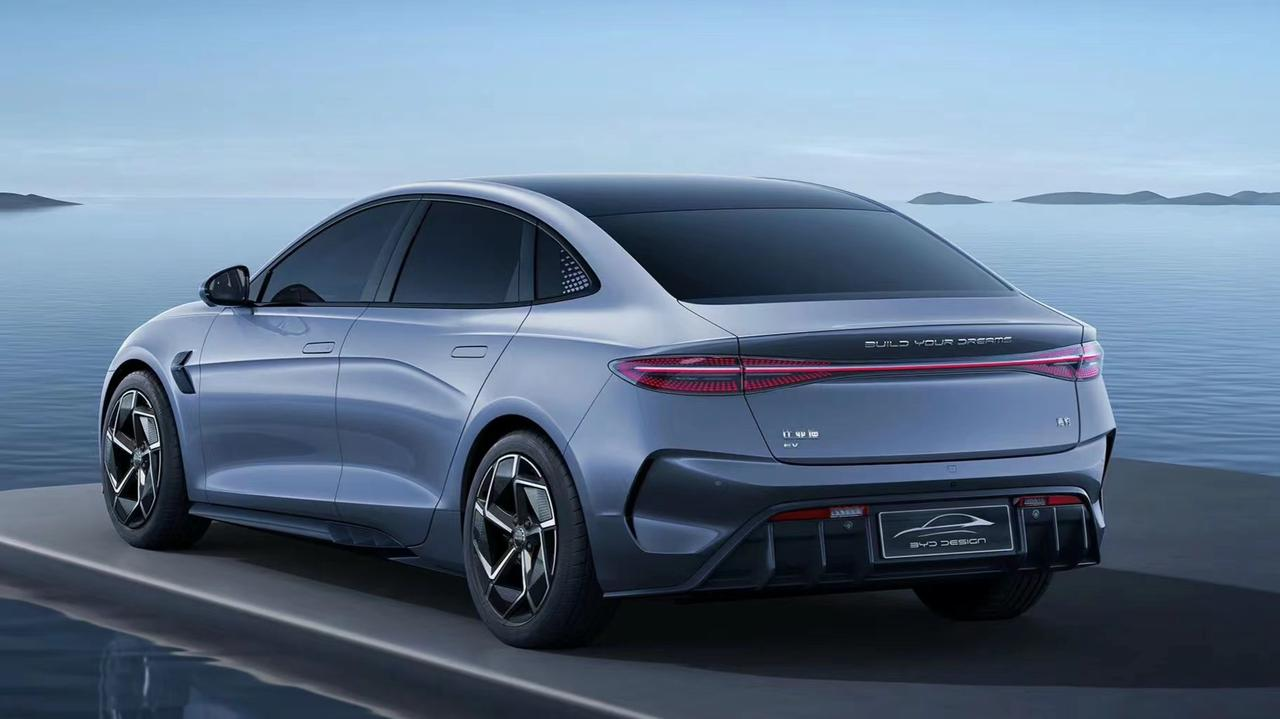
One notable detail is that the rendering of the Sea Lion no longer has the 0-100 km/h acceleration pasted on the rear, but the declaration map of the Ministry of Industry and Information Technology still has the “3.8 S” tail mark. In my opinion, this behavior is like wearing an expensive suit and deliberately leaving the price tag out of the collar, which not only looks bad but also too deliberate. I really hope that BYD can minimize these kinds of counterproductive decorations in subsequent models.
The interior is normal with few flaws
The situation in the interior of the Sea Lion has improved a lot. The most conspicuous part of the front row is that the steering wheel has abandoned the previous dual-tone combination on the Dynasty model, and the passenger side no longer has the low-frequency flashing fish scale atmosphere light of the Han EV. The saturation of the light-colored seats throughout the car is moderate, and the new gear lever design is more exquisite than before, with new ideas but not being unconventional.
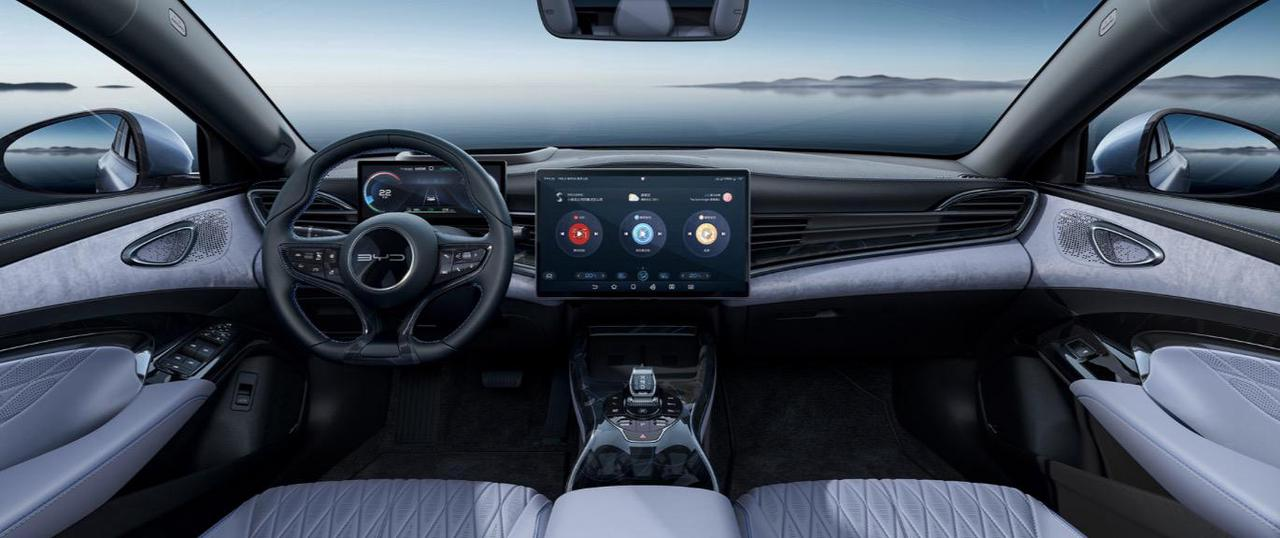 To sum up the interior of the Sea Lion in one sentence: there are many details and distinctive design features that have moved from “trying too hard” to “just right”, and it’s easy to understand the principle that too much is just as bad as too little. I believe the official team has also noticed consumers’ dissatisfaction with BYD’s previous interior design, and has therefore exercised more restraint in their design. This is evident in recent models such as the Sea Lion and e9.
To sum up the interior of the Sea Lion in one sentence: there are many details and distinctive design features that have moved from “trying too hard” to “just right”, and it’s easy to understand the principle that too much is just as bad as too little. I believe the official team has also noticed consumers’ dissatisfaction with BYD’s previous interior design, and has therefore exercised more restraint in their design. This is evident in recent models such as the Sea Lion and e9.
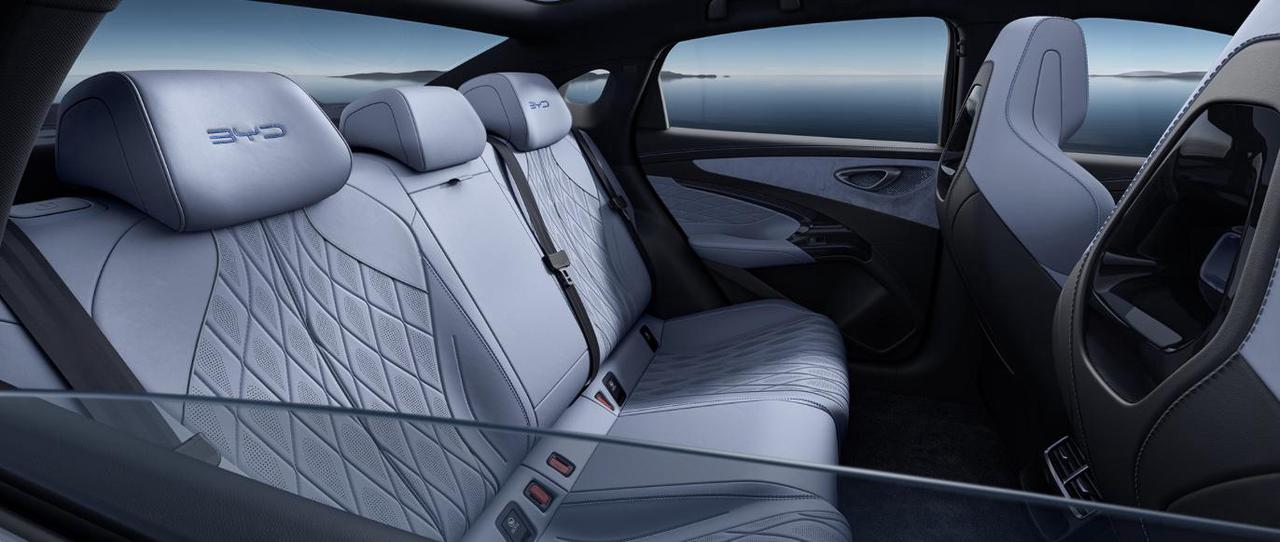
Looking at the rear seats, the space appears to be good, with ample knee room, but it can be seen that the headroom and the rear windshield header are quite close. The impact of the sloping roofline on the space still needs to be experienced in person, as does the CTB technology’s gain in vertical legroom.
“What, you don’t know what CTB means? Let me explain.”
Two Technical Terms: CTB and iTAC
The Sea Lion’s launch event was also the unveiling of BYD’s CTB battery technology. As the first electric vehicle model from BYD to adopt the latest battery technology, the Sea Lion is the first model with technology resembling that of the Han, indicating BYD’s emphasis on and high expectations for the Sea Lion project.
New Battery Structure: CTB
CTB stands for “Cell To Body,” which belongs to the same class as the previously mentioned “CTC” technology. Compared to the previous CTP module-free battery pack design, the most significant difference in the new structure is that the battery system’s design has a higher degree of integration, and the battery pack has now become a structural component on the chassis, improving the vehicle’s mechanical performance while reducing the chassis’s Z-direction thickness.

A significant change in the component composition of the two different structures is that the battery cover and the vehicle floor have been merged into one component. As shown in the following figure, the chassis of the Sea Lion is “empty” before installing the battery pack. After assembly, the battery cover becomes the vehicle’s floor structure, increasing the Z-directional space inside the vehicle by 10 mm.
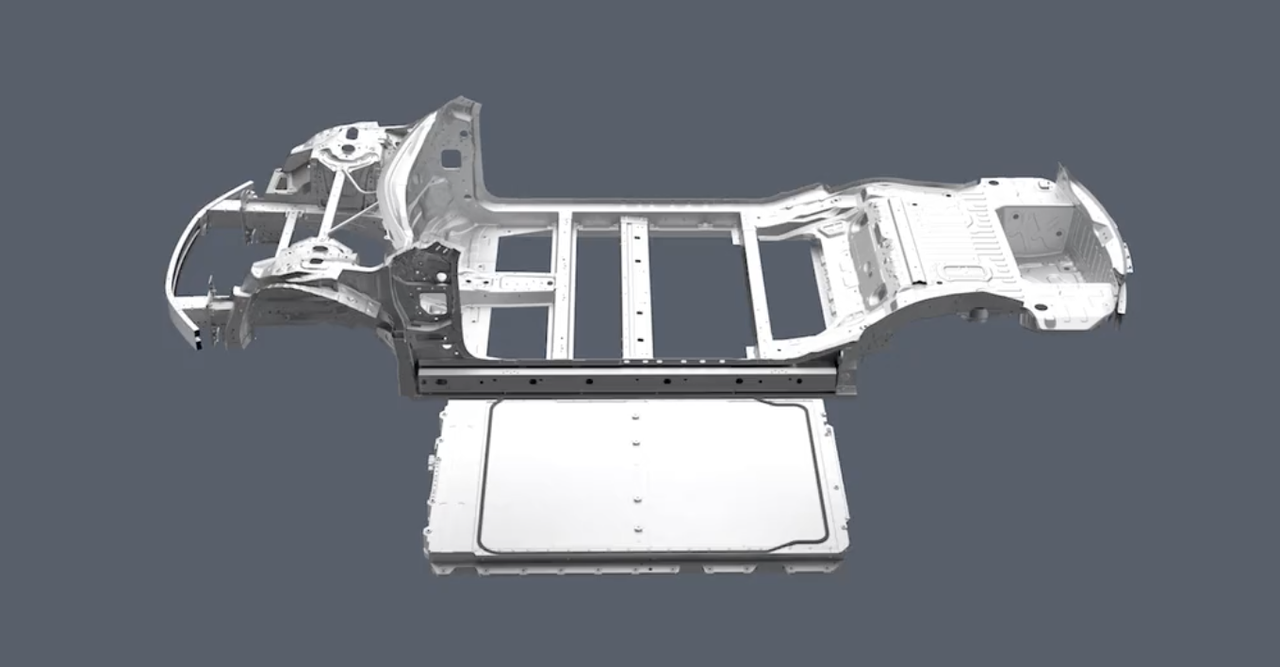
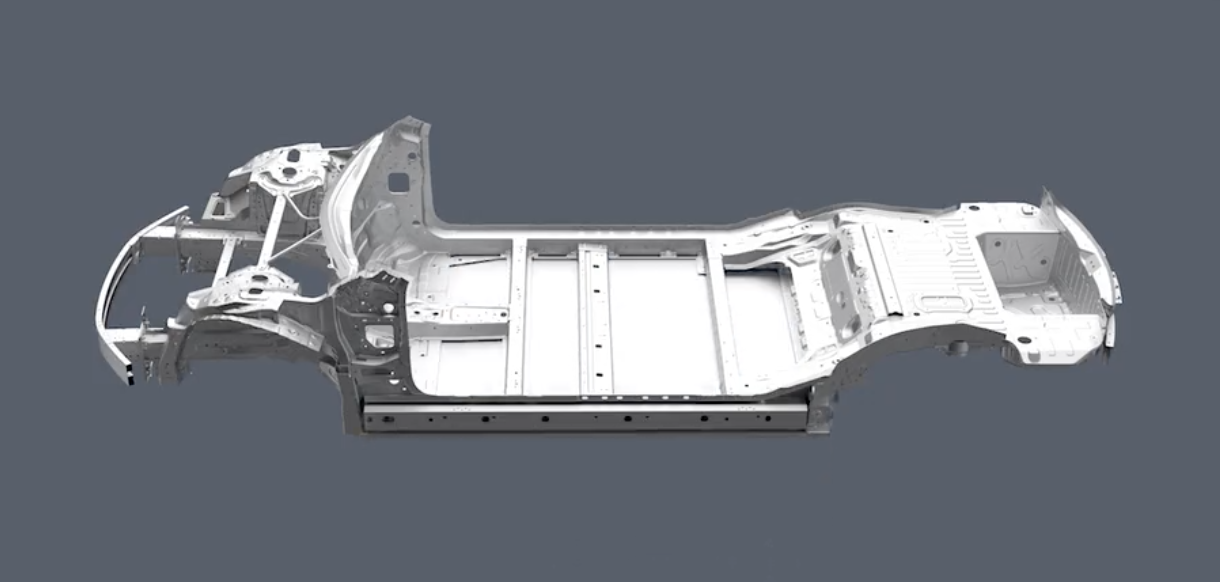 There are currently a few battery structure-based applications on the market, including the BYD Dolphin, Tesla Model Y produced in the Texas factory, and the Leapmotor C01. The ideas behind these are similar, but Tesla’s battery pack structure itself adds strong lateral reinforcement to support the chassis without any crossbeam in between, and the front seat bracket is directly mounted onto the battery pack.
There are currently a few battery structure-based applications on the market, including the BYD Dolphin, Tesla Model Y produced in the Texas factory, and the Leapmotor C01. The ideas behind these are similar, but Tesla’s battery pack structure itself adds strong lateral reinforcement to support the chassis without any crossbeam in between, and the front seat bracket is directly mounted onto the battery pack.
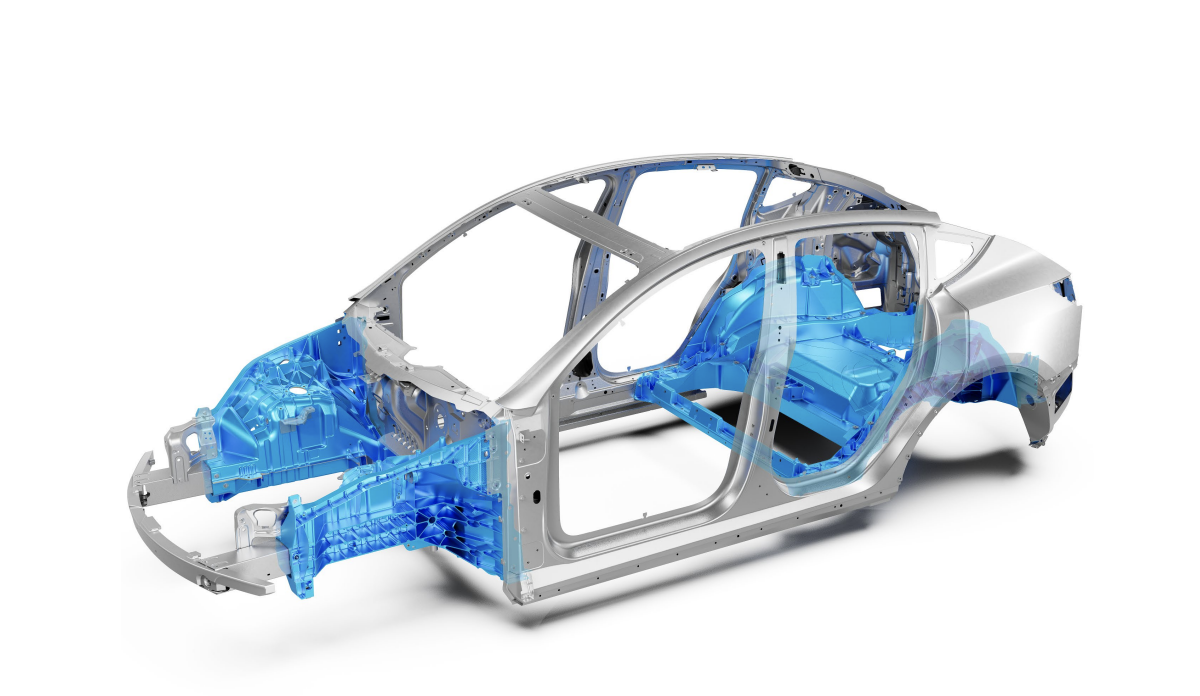
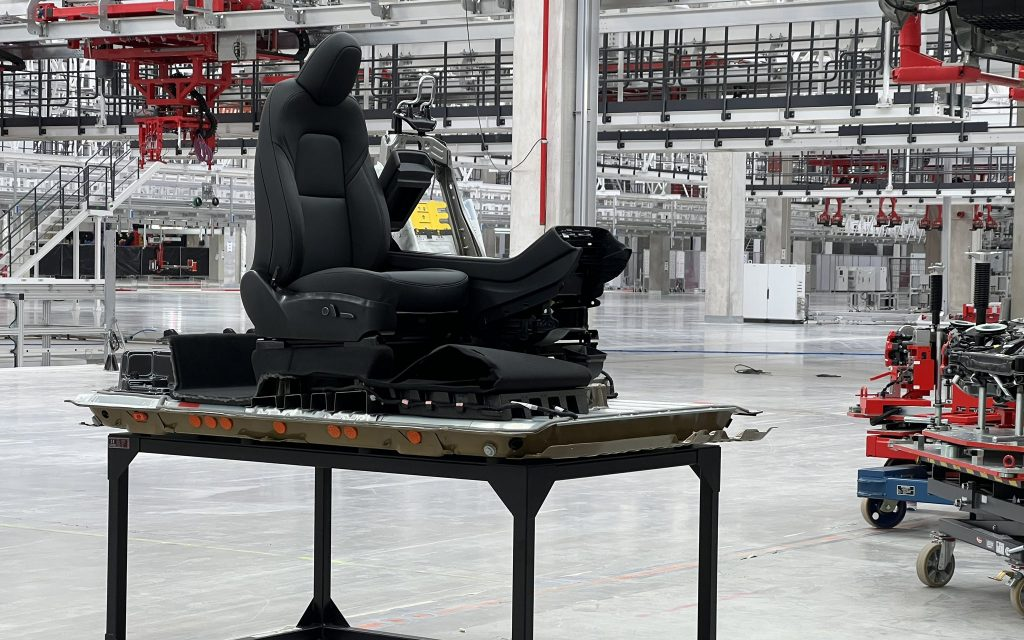
Leapmotor’s C01, which uses CTC structure, claims during the official launch event that CTC reduced 20% of the vehicle’s components, lowered the structure component cost by 15%, and increased the overall vehicle rigidity by 25%. The Leapmotor C01 equipped with CTC battery pack has a torsional rigidity of 33,897 N·m/deg.
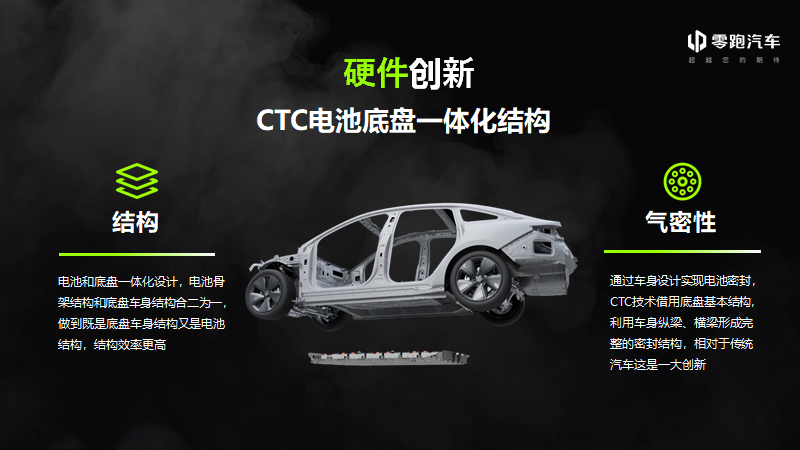
BYD had the Dolphin, which has the CTB technology, with a torsional rigidity of 40,500 N·m/deg. The benefits of having such high rigidity are many but will not be enumerated here. The focus is now on the second key technology demoed during the launch event, the iTAC.

New Name, Not New Technology
The following two demonstrations from the official iTAC promotional video tell us what the technology does in everyday language:
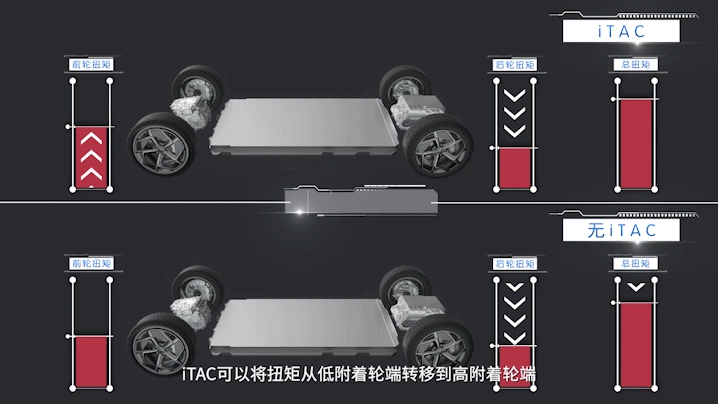
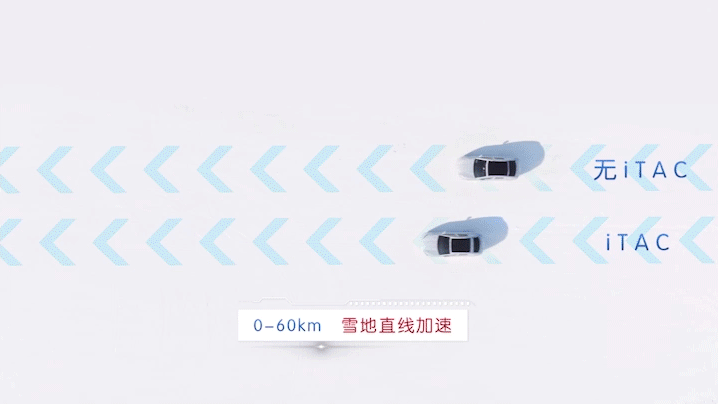
They show how iTAC helps to evenly distribute torque among wheels, preventing some wheels from skidding without reason to achieve better adhesion, and more stable handling and acceleration. The official demonstration for iTAC was carried out on a low-traction snowfield, demonstrating patent confidence in this system. Readers familiar with this technology may find that it is essentially a TCS traction control system that integrates some of the ESP’s vehicle stability functions.Speaking of this, I immediately remembered the disastrous traction control performance of the Han EV four-wheel drive version when it was first released.
Although the flagship version of Han EV was a four-wheel drive model, the power experience was extremely front-wheel drive, even in sport mode, power was still allocated to the front wheels first.
In stationary and low-speed situations, as long as the throttle is deeply pressed over half, the front wheels of the vehicle will slide and slip, while the opposite rear wheels will remain motionless for a short period of time when the front wheels are sliding. During this time, the only thing the accelerator pedal gets is the exaggerated sound of the tires, and the expected full output of the rear wheels is delayed for a while.
On the other hand, Model 3, famous for its driving control, is a different story when it comes to traction control. In actual driving, whether in corners or rainy days, when the driving rear wheels slip, the system quickly restricts power output to restore adhesion.
After adopting a rear-drive architecture, a more rear-drive motor layout, and iTAC technology assistance, the Harrier’s power output theoretically should make significant progress compared with the Han EV. A full evaluation of this aspect will be made after subsequent test drives.
Harrier Compared to BYD
Following the driving control part mentioned above, let’s finally talk about the overall product power of the BYD Harrier.
Combining the currently released official information, Harrier is undoubtedly a highly competitive mid-size pure electric sedan. The large battery over 82 kWh in the long-range model and the 230 kW rear axle oil-cooled motor are particularly outstanding in horizontal comparison. The low wind resistance design and efficient thermal management are also BYD’s well-known strengths. I believe that this car’s overall cruising range will not disappoint.
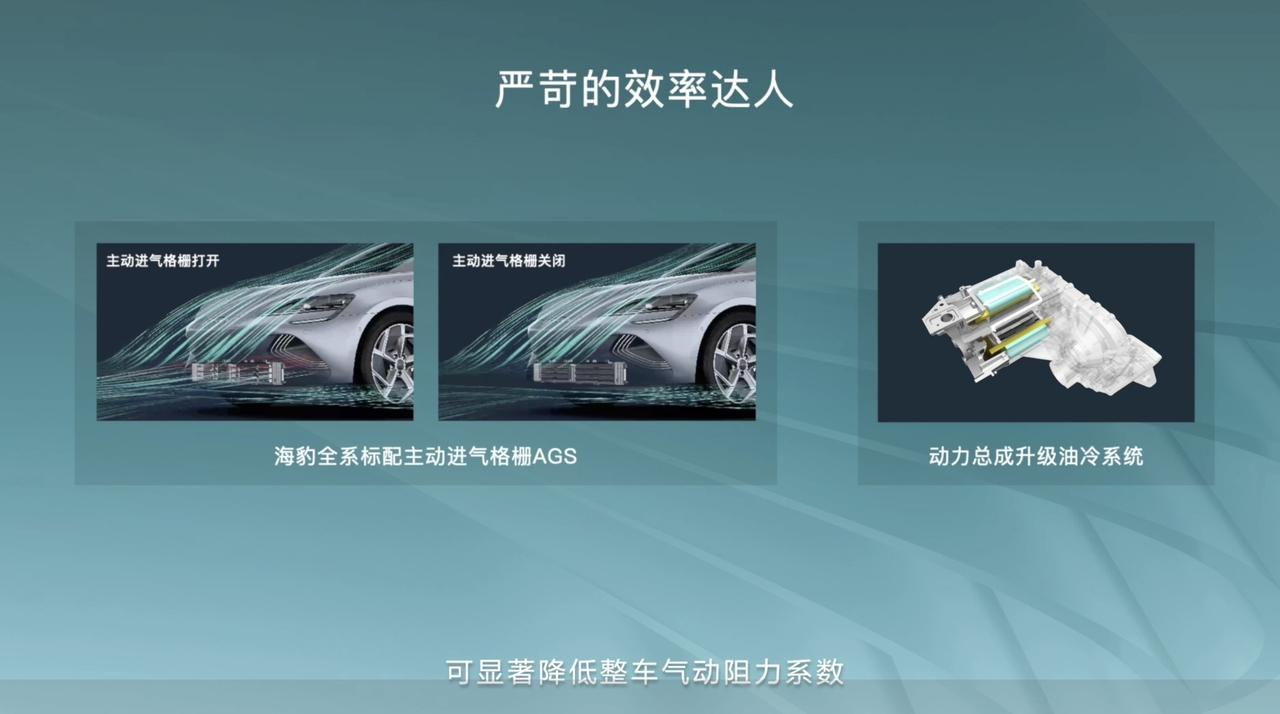
In addition, Harrier’s native pure electric platform provides not only many advantages in vehicle engineering but also more design freedom for the vehicle. Although the originality of Harrier’s front face may be lacking, overall, the internal and external styling of Harrier is of a high standard compared to other products in the BYD product line, and it does not have any significant disadvantages.
The more directly perceivable product power flaw on paper is BYD’s shortcoming in intelligence. The lack of advanced driver assistance features will undoubtedly cause Harrier to lose some customers. However, objectively speaking, the market penetration rate of advanced driver assistance is still in its early stages, and this shortcoming’s impact is currently not fatal. BYD Han, which also has the same shortcomings, still has strong sales.
In the end, as the key product power point in the Harrier’s official promotion, its athleticism is currently the most uncertain aspect for me. Speaking frankly, among the many generations of BYD models I have driven in the past few years, including Tang, Song, and Qin, there were several products with pleasing riding experiences. But from the driver’s perspective, regardless of the strength of the power, none of the cars’ driving controls can be described as excellent, which has always been BYD’s weakness.In the case of general product driving experience, BYD’s promotion of performance on high-power versions of Tang, Han and other models was also very simple and crude: focusing on zero to one hundred acceleration, followed by a very exaggerated elk test score. However, whether in actual driving or track testing which can best reflect vehicle performance, these high horsepower BYD models often fall short.
People don’t believe the wolf is coming because the wolf didn’t come several times before. So when the Sea Lion once again appears with its sports and performance labels, with the exaggerated elk test score of 83.5 km/h, despite the fact that it has replaced the front asynchronous and rear induction motor, and front double wishbone and rear five-link suspension to match the configuration of Model 3, I am still cautious.
Returning to the conclusion at the beginning, conclusion one, Sea Lion will not replace Tesla’s Model 3. On the one hand, Model 3 has auxiliary driving capabilities that Sea Lion cannot provide; on the other hand, Model 3’s prowess in driving control can rival that of top players in the traditional car industry at the same price. I believe Sea Lion will make progress, but building a tall building on flat ground doesn’t happen easily and still needs to be verified. In terms of the most premium design and aesthetics, Sea Lion still lags behind Model 3. But under this conclusion, I also need to add a viewpoint. As a high-configured pure electric sports sedan in the 200,000 to 300,000 price range, Sea Lion has a relatively high performance-to-price ratio. The top-equipped model is only slightly more expensive than the entry-level rear-drive version of Model 3.
Conclusion two, Sea Lion is not BYD’s Model 3. For BYD, the pure electric car that really helped the group open up the consumer market is BYD Han, and the hybrid car is Qin PLUS Dm-i. At the crucial stage of selling 100,000 units per month, Sea Lion today is already standing on the shoulders of its predecessors.
This car has a different significance for BYD: it will cooperate with its older brother Han in product orientation to form a dual-purpose sports + home use car product line at the same price range. Through pure electric + DM-i + DM-p, it will further expand the audience, forming a complete new energy sedan lineup for BYD in the 200,000 to 300,000 price segment.
I am optimistic about the sales of this car, not only because the car itself has excellent data on paper and an attractive price, but also because the influence of BYD’s fan base will penetrate the pure electric sports sedan market where Sea Lion is located. Apart from the blade battery, Sea Lion, with its pure electric platform, CTB battery, entry-level rear-wheel drive, and front double wishbone and rear five-link suspension, will help them stand at the top of the electric car hierarchy, continuously expanding the recognition and awareness of BYD’s brand and products.
In conclusion,# Today is May 20th, 2022, 3268 days ago, BYD Chairman Wang Chuanfu stated at the company’s shareholder meeting that Tesla has played an excellent role in promoting pure electric vehicles and cultivating consumer habits. However, the company’s pure electric car development mode is different from Tesla. Currently, the positioning is for taxis and buses.
Wang Chuanfu told investors that for the company, pure electric vehicle technology is not a problem, but the market is the problem. It only takes 4 to 5 years to expand new production capacity.
And the controversial flag that once was raised: “Once home consumption is launched, BYD can build Tesla in minutes.”
With the release of the sea lion, this speech has a different feel today.
This article is a translation by ChatGPT of a Chinese report from 42HOW. If you have any questions about it, please email bd@42how.com.
